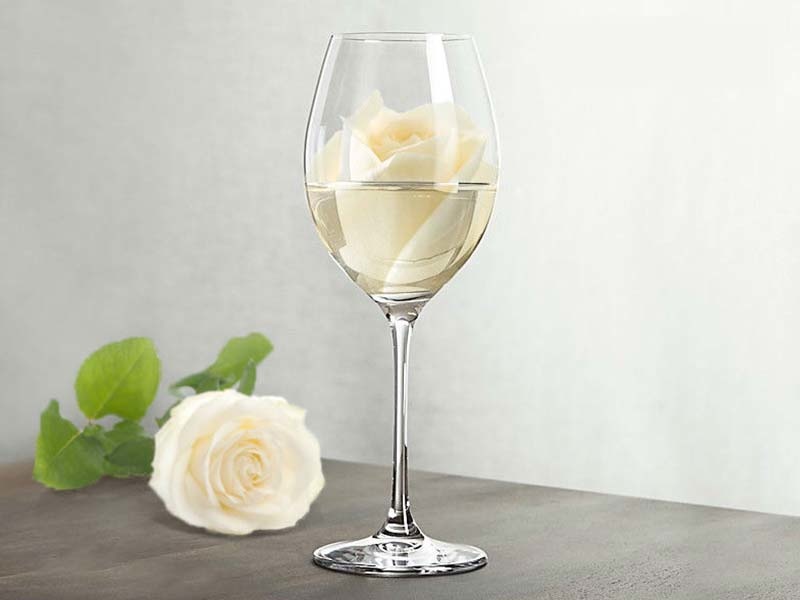Flowers in your Wine
- Posted on
- Posted in Australia, Bosnia-Herzegovina, Germany, grenache, grillo, Italy, Pinot Meunier, zilavka
- 0

Have you ever put a glass of wine up to your nose and noticed prominent aromas of flower, and wondered those notes come from? I can, with good conscience, confirm that floral scents in wine DO NOT come from a winemaker dipping an extra-large tea bag of dried flower petals into their tank or barrel of wine. The answer to the question, “Well, from where then?” is chemistry. I know that your eyes are now glazing over, and you are being flooded with memories of high school lab, and the smell of burning sulfur is filling your nostrils and making you cough. Bear with me, okay?
Chemistry is a very good thing when it comes to wine. Grapes have natural chemical compounds that provide aromatics including floral notes. Fermentation can cause other aromatic compounds to be created or released, and other smells come from aging in barrels. A winemaker may choose a strain of yeast that will bring out more of the floral notes in a wine, if desired.
Now, let’s get back to the chemistry. Wines can contain a variety of chemical compounds responsible for those bouquets coming out of your glass. A few classes of compounds that produce floral smells in wine are esters, terpenes, ketones and diketones.
Esters are compounds created by the reaction between acid and alcohol, and tend to be fruity, but can also provide white-blossom scents. Terpenes are a class that includes a number of compounds that produce different scents. Linalool is a terpene which may provide hints of lilies, orange blossoms, or lavender in a wine. Aromatics of rose petals come from the terpene geraniol. Nerol and citronellol (yes, think of citrusy citronella candles) bring floral and citrus scents. Whiffs of elderflower or linden blossoms would come from the terpene called hotrienol. Ketones and diketones provide a fragrance of lavender to a wine.
There will be no quiz on this, I promise.
Wines that can have aromatics of roses include Gewürztraminer, Nebbiolo, Grenache, Gamay, Pinot Noir, and Sangiovese. White blossom perfumed notes are most likely to be found in Pinot Gris, Pinot Blanc, Chenin Blanc, Muscadet, Fiano, and Torrontes (way more prominent in wine from this grape, and I’d more specifically call it potent jasmine blossoms). Chardonnay, Viognier, Chenin Blanc, and Riesling tend to have citrus blossom aromas. Lavendar bouquets are often found in wines made from Petit Verdot, Malbec, Grenache, Syrah, Mourvèdre, Sangiovese, and Tempranillo. Whiffs of violet may be found in Merlot, Cabernet Sauvignon, Petit Verdot, Malbec, Grenache, Mourvèdre, and Touriga Nacional.
For City Vino’s tasting on August 19 and 20, we will be featuring four wines with aromas of flowers for your smelling and tasting pleasure. Rita and team went a bit rogue on several of these wines, and the grapes aren’t in my list above! Look at them bringing out the wild cards … or is that the wildflowers?
The wines are:
- Cantine Pellegrino Traimari Frizzante – this non-vintage lightly bubbly wine from Sicily is a blend of Grillo and Zibibbo (Muscat d’ Alexandria). Look for floral aromas of jasmine and orange blossom in this wine.
- 2019 Wines of Illyria Čifluk Stone Cuvee White – this wine from Bosnia is 90 percent Žilavka and 10 percent Bena, which are grapes indigenous to the region. See if you find hints of chamomile and verbena in this one. If you don’t know what chamomile smells like, pick up a tea bag and sniff it. I certainly have for use in expanding my fragrance recognition skills.
- 2018 Darting Pinot Meunier Trocken – this wine is made from 100 percent Pinot Meunier, grown and produced in the Pfalz region, in Germany. Pinot Meunier is another mutation of Pinot Noir, along with Pinot Blanc and Pinot Gris. The grape gets its notoriety from being one of the three grapes that are used to make Champagne. I have not tasted many red wines made from this grape, folks, so seize this opportunity. As for floral aromatics, expect a lovely bouquet of roses from this wine.
- 2020 Thistledown Wines Gorgeous Grenache Old Vine No 1- this wine is made from 100 percent Grenache, and is from South Australia. Finally, a grape I listed above for its notes of violets (or lavender). Score one for Kathy. Finally.
The idiom “stop and smell the roses” this weekend becomes “stop and smell the flowers in your glass.”
Join us, won’t you?

Comments
Be the first to comment...